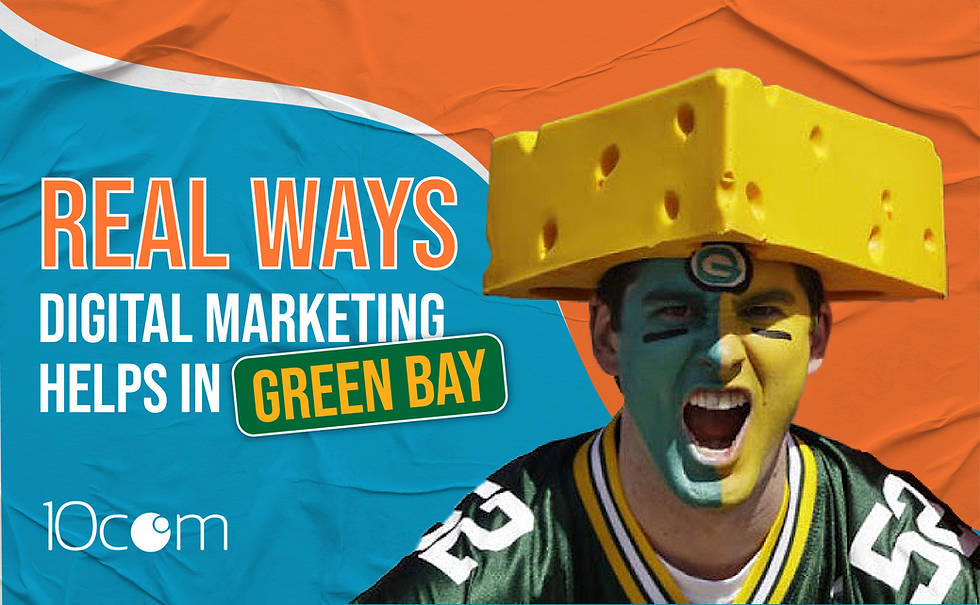Solving Media Query Problems in Responsive Web Design
- 10com Web Development
- Sep 27
- 4 min read

Having a site that works well on every device isn't just a nice touch; it's something your business needs, especially in places like Chicago and Fort Worth. This is where media queries in responsive web design come into play. They help ensure your website looks great, whether someone visits on a big desktop screen or a tiny phone. But what happens when media queries don't quite hit the mark? It can turn a good website experience into a frustrating one pretty quickly.
Responsive Web Design Services are all about optimizing your website so it looks professional and operates smoothly on any device. This becomes particularly vital when considering the needs of a local audience. Whether you're a small business owner in Fort Worth or a service provider in Chicago, a responsive website can open a direct line of communication to your customers, making their visit to your site smooth and hassle-free.
Common Media Query Problems in Responsive Web Design
Media queries can sometimes trip up even seasoned web designers. These issues usually revolve around inconsistent breakpoints or clashing CSS rules. Let's break this down a bit.
First, establishing breakpoints incorrectly can lead to elements not aligning properly on different screens. For instance, if your site has a breakpoint set for tablet screens at a width of 768px, but you didn't account for the variety of other devices people use, you might see parts of your webpage behaving oddly, like text overlapping or images getting cropped.
There's also the matter of conflicting CSS rules. This can happen when older styles aren't updated to match changes in design, resulting in unsightly layout disruptions. When styles clash, it might throw off the visual harmony of your pages, making navigation tricky and frustrating.
To make things more digestible, here's a brief checklist to recognize these common hurdles:
Breakpoints set incorrectly for various device sizes
Overlapping styles leading to visual inconsistencies
Missing fallback solutions for unsupported media queries
Spotting and solving these issues early on can help keep your website responsive and user-friendly. This sets the stage for a much deeper dive into ways to identify and tackle these pesky media query problems effectively.
Techniques for Diagnosing Media Query Issues
Diagnosing where media queries stumble often begins with understanding how your site behaves across various devices. A hands-on method involves leveraging developer tools in most browsers. By inspecting elements, you can see how your styles apply to different screen sizes in real time. It's like having a cheat sheet that pinpoints which CSS lines might be throwing a wrench into your design.
Another handy approach is to utilize online responsive design testers. These tools let you view your site as if you're different users on varying devices without actually owning every gadget out there. They simulate countless screen sizes, giving you insights into any layout issues that crop up. This helps identify the trouble spots quickly, so you can spend time fixing rather than searching.
Occasionally, a straightforward checklist can highlight problems:
Review CSS for conflicting styles that override media queries
Ensure breakpoints reflect new devices entering the market
Use console logging to track errors during page loads
Having these strategies at your fingertips brings clarity to unresponsive layouts, making problems easier to tackle.
Effective Solutions to Media Query Problems
Once you've pinpointed the issues, it's time to roll up your sleeves and get into fixing mode. Begin with writing tidy and precise CSS. Keeping your code organized reduces complexity and prevents styles from stepping on each other. This clarity not only helps you but also anyone else who might work on the project down the line.
Consider employing flexible grid systems. These frameworks simplify creating fluid designs that adapt well across devices. Options like Bootstrap or CSS Grid offer pre-set structures, saving you from the ground-up challenges. They bring consistency in design, reducing conflict between media queries and static content.
Also, don't forget about hybrid designs. By combining flexible and fixed elements, you accommodate more user preferences and screen sizes, maintaining versatility without sacrificing control.
Future-Proofing Your Responsive Design
Maintaining a responsive site doesn't end with one solution. It’s about adopting best practices and keeping an eye on updates. Periodically check device statistics and adjust design strategies as needed. Regular testing, even when the site seems perfect, ensures you catch sneaky issues that pop up with new devices or browser updates.
Keeping informed about emerging technology can give you a head start. Explore web design blogs or forums that discuss recent trends. With the digital landscape constantly evolving, being proactive is key. It not only preserves your website's longevity but also keeps it competitive in a fast-paced world.
Stay Ahead with Professional Help
Addressing media query issues effectively can transform clunky digital experiences into smooth, enjoyable interactions for your users. Partnering with experts can refine and amplify these efforts. They bring a deep understanding of the nuances involved. So, if ever in doubt, reaching out to professionals can offer that layer of expertise that lifts your site to its fullest potential, maintaining a seamless user journey and ensuring the best results every time.
To ensure your website delivers an exceptional user experience across all devices, embracing responsive web design is key. Let the experts at 10com help you navigate and resolve any media query challenges your website may face. Learn more about our responsive web design services to see how you can optimize your site's performance and maintain its competitive edge.




Comments